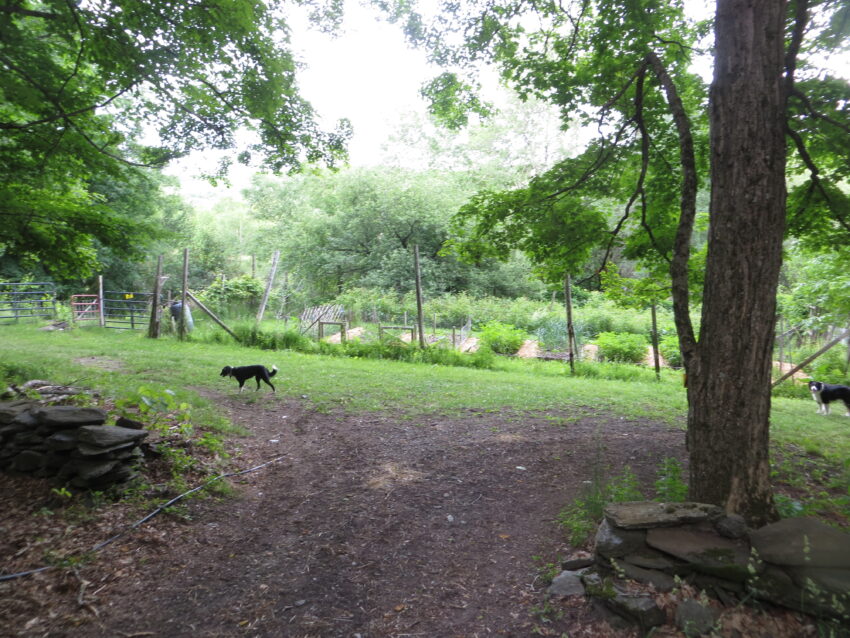Each year in late winter, which for us is around April, we begin to think garden thoughts. We’ll sit on stools in the kitchen and map out future plots. We think about the fruit and vegetables that we want on our table and in our larder come fall. Farm catalogs come in the mail and we get excited over triangular trowels, stainless steel watering cans and seeds in hand painted packets.
This year the latter part of May was exceptionally warm which meant we put things into the ground earlier than the normal Memorial Day deadline. Because of the climate-change indicators this is scary, but from a growing perspective, exciting. I’m from the bury-the-seed generation but in the past couple of years we have come to embrace more of the no-till method of planting. Our friend Jeff had done the heavy lifting: learning about it all from an English gardener, and was kind enough to pass along the philosophy to us. The general idea is that when we turn the soil, by hand or by shovel, we disrupt a unique ecosystem within the soil. So, we overturned years of how we had been planting – beginning by roto-tilling the earth and then digging to plant seeds – and began a more scattershot approach.
We basically dropped seeds and covered them with a light blanket of dirt. Potatoes were a bit trickier as “technically” you can put them in your rows and cover with a mixture of dirt and straw but my father’s voice was in my left ear so we split the difference and used our fingers to bury the pieces of potato in a shallow grave.
The piece de resistance is, of course, the top dressing of manure – thank you Mrs. C and chickens. What a difference a bit of poop makes.
One of the higher lessons I have learned from farming is the letting go. Pre-farm I would have been wearing gloves and using some kind of tool to break up manure clods for the beds, now I dig in, barehanded, quite delighted with the soft, sometimes slippery mess that I mash and lay over my plants and seeds. The feeling of earth and animal touches a memory deep inside of me. My grandfather’s hands, my father’s voice.
Interestingly, the most difficult part begins now. The beds are laid, the fences in place, the sprinkler stands at the ready. Now we….wait.
In a few weeks we begin to see peas coming up from under the bamboo fencing, their tiny curly tendrils reaching for something to hang onto. I walk between the rows over the chicken manure/shavings we have put down and look to the ground like a mother looking into her baby’s crib. As with children, once planted, our job becomes about pulling a weed or two and simply waiting to see what grows.
Our garlic, sowed in the fall and poo-fortified, grows like a weed: straight, strong, with thick green stalks. The potatoes begin to emerge everywhere: sometimes where planted and other times “volunteers” appear among the garlic and the raspberries. Our garden becomes a hub of activity and I love to visit daily while bringing the sheep to pasture. I pull pink and green rhubarb stalks and put them into paperbags for Judy. I take my steel colander down and fill it with Kale. Curly like my hair. I give it a quick wash and will steam some to have with dinner.
I find myself looking out of the living room windows down to where the garden lies just to see the stripes of black soil and green plants. Something about the order delights me.
It is in the these moments that I connect with all things growing – including myself. I realize that we begin in a scattering, a sowing. All growth requires letting-go, having faith, and adding a little poo.
